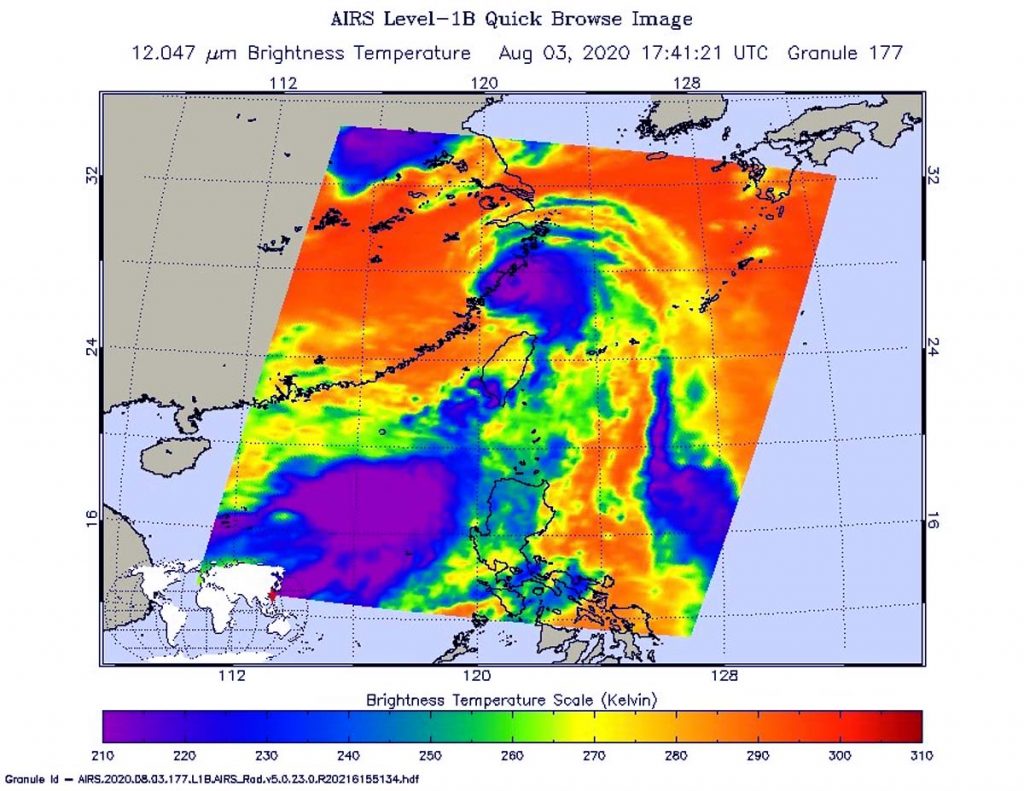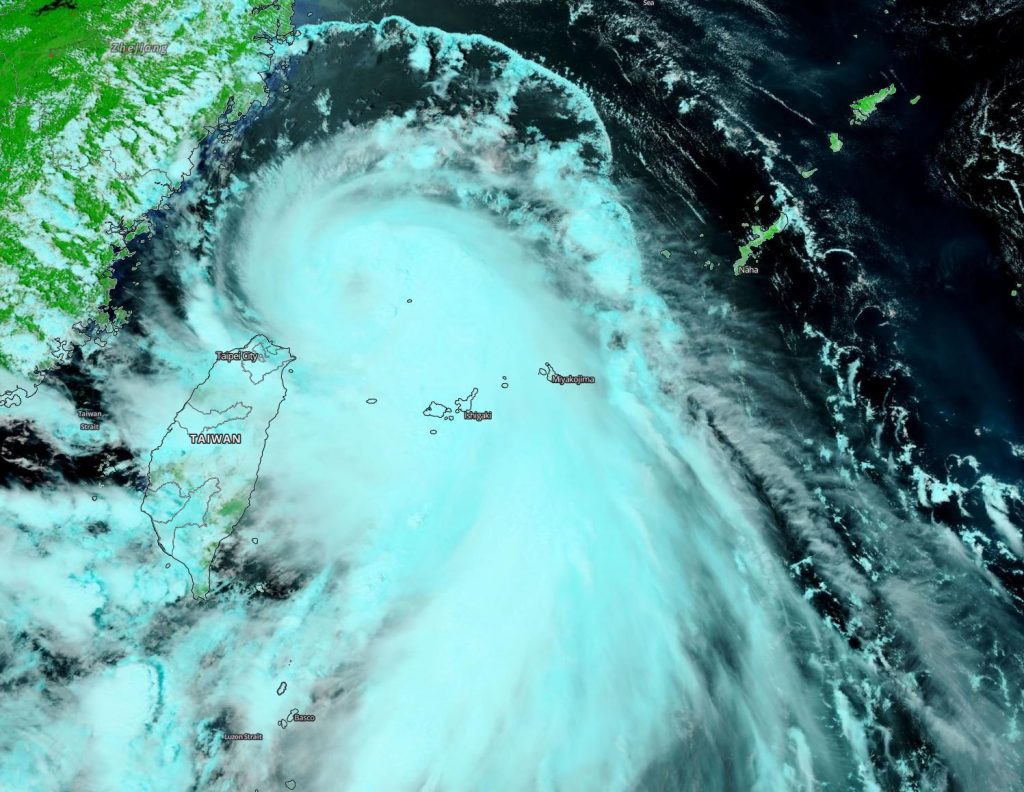Aug. 04, 2020 – NASA Infrared Imagery Shows Hagupit Nearing Landfall in China
NASA’s Aqua satellite provided a look at Typhoon Hagupit as it was nearing landfall in southeastern China.

One of the ways NASA researches tropical cyclones is using infrared data that provides temperature information. Cloud top temperatures provide information to forecasters about where the strongest storms are located within a tropical cyclone. Tropical cyclones do not always have uniform strength, and some sides have stronger sides than others. The stronger the storms, the higher they extend into the troposphere, and the colder the cloud temperatures.
On Aug. 3 at 1:41 p.m. EDT (1741 UTC) NASA’s Aqua satellite analyzed Hagupit using the Atmospheric Infrared Sounder or AIRS instrument. Aqua passed over Hagupit less than 2 hours before its official landfall.
The infrared data showed the bulk of the storms were southeast of the center because of vertical wind shear or outside winds pushing against the storm from the northwest.
AIRS found coldest cloud top temperatures as cold as or colder than minus 63 degrees Fahrenheit (minus 53 degrees Celsius). NASA research has shown that cloud top temperatures that cold indicate strong storms that have the capability to create heavy rain.
China’s National Meteorological Center reported that Hagupit made landfall China’s Zhejiang province on the coastal areas of Yueqing City at around 3:30 a.m. local time on Aug. 4 (3:30 p.m. EDT on Aug 3). At the time of landfall, Hagupit had maximum sustained winds near 85 mph (137 kph), equivalent to a Category 1 hurricane.
At 5 a.m. EDT (0900 UTC) on Aug. 4, the Joint Typhoon Warning Center noted that Tropical depression Hagupit was centered near latitude 29.8 degrees north and longitude 120.3 degrees east, about 104 nautical miles southwest of Shanghai, China. Hagupit was moving to the north with maximum sustained winds decreasing to 30 knots (35 mph/56 kph).
Hagupit is moving inland over eastern China and the Joint Typhoon Warning Center forecasts that it will reemerge into the Yellow Sea on Aug. 5, but adverse conditions will lead to Hagupit’s dissipation.
The AIRS instrument is one of six instruments flying on board NASA’s Aqua satellite, launched on May 4, 2002.
For more than five decades, NASA has used the vantage point of space to understand and explore our home planet, improve lives and safeguard our future. NASA brings together technology, science, and unique global Earth observations to provide societal benefits and strengthen our nation. Advancing knowledge of our home planet contributes directly to America’s leadership in space and scientific exploration.
For updated forecasts, visit: www.nhc.noaa.gov

